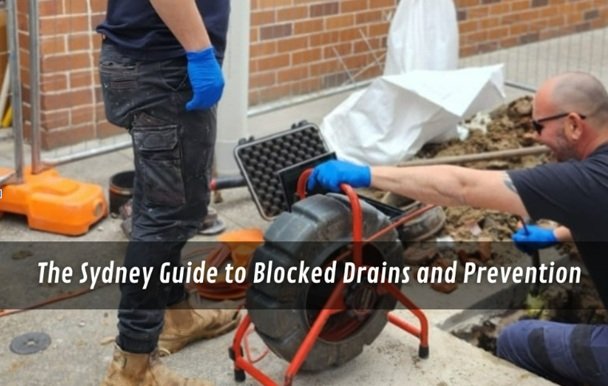
It usually starts with something tiny — a slow swirl of water that just won’t disappear down the plughole, or a soft bubbling noise you can hear when the washing machine finishes its cycle. Easy to ignore at first. But in Sydney homes, those little quirks can turn into a messy surprise when the water has nowhere to go. I’ve had my fair share of those mornings — hair still wet, kettle boiling — only to realise the shower’s become a shallow bath. That’s when having a blocked drain plumber Sydney trusts, like Apex Plumbing Services, in mind feels less like over-preparing and more like common sense.
Industry bodies such as the Master Plumbers Association of NSW note that early intervention is critical, especially in cities like Sydney, where older and newer plumbing systems sit side by side.
This isn’t about calling in a professional at the first drip, but about recognising when the signs aren’t going away. With Sydney’s odd mix of century-old pipes and shiny new systems, knowing who to turn to (and when) can make the difference between a quick fix and a long weekend of frustration.
Clogs don’t just happen out of nowhere — they’re like slow-growing weeds in a garden you forgot to water. By the time they’re obvious, the roots (or in this case, gunk) are already set in.
A few tell-tale signs pop up if you’re paying attention:
I once shrugged off a slow kitchen sink, figuring it was “just a bit clogged” from cooking. Two weeks later, I was standing ankle-deep in murky water, fishing out what looked like a combination of coffee grounds, pasta, and pure regret.
Independent advice groups like Choice often remind homeowners that ignoring these early signs usually leads to bigger, costlier issues.
Sydney’s underground network isn’t uniform. You could have a heritage terrace with brittle clay pipes next door to a townhouse with gleaming PVC. And that mix means repairs aren’t always straightforward.
The NSW plumbing licence requirements exist for a reason — to make sure the people digging into your drains actually know how to treat each type of system without making the problem worse. It’s not just paperwork; it’s training, equipment handling, and a healthy respect for what can go wrong when you cut corners.
According to NSW Fair Trading, checking your plumber’s licence is a simple but essential step in protecting your home from unsafe or improper work.
I’ve seen old pipes collapse under too much water pressure because someone tried a “quick fix” without knowing the limits. A licensed plumber wouldn’t make that mistake.
The Master Plumbers Association of NSW also emphasises that ongoing training ensures plumbers can safely manage both ageing clay pipes and modern PVC systems.
Big fixes are one thing, but most problems can be kept at bay with small, almost boring habits:
These tweaks aren’t flashy, but they mean you’re less likely to be making frantic weekend calls when everything backs up.
Storm season here has a habit of moving problems along… right into your pipes. Dirt, leaves, and all the little bits washed off roofs find their way down grates and into systems that aren’t expecting it.
That’s why I like a routine check after heavy weather — nothing too intense, just a look around and a quick flush to keep things clear. And when it comes to tips for upkeep, DIY blocked drain prevention tips offer a handy way to stay on top of things before they turn nasty.
As Sydney Water notes, even minor blockages in storm drains can escalate quickly when Sydney’s sudden downpours hit.
I’ve done both — regular checks and nothing at all — and I can tell you which one ends with a Sunday afternoon spent holding a plunger.
A blockage can be the symptom, not the cause. That’s why some homeowners take it as a chance to upgrade what’s already there.
Whether it’s replacing tired pipe sections, swapping in water-efficient fixtures, or rearranging certain runs so waste flows better, modern plumbing improvements can help cut down the risk of repeat problems.
The World Plumbing Council points out that modern plumbing upgrades don’t just prevent blockages but also contribute to global water conservation efforts.
I’ve seen people put off upgrades for years, only to finally make the leap and wonder why they didn’t do it sooner. Better water flow, fewer headaches, and sometimes even a quieter system — it’s worth considering if you’ve had more than one blockage in the same spot.
Sydney’s climate has a way of sneaking up on you. Months of dry weather let dust and grit collect in outdoor drains, and then the first heavy downpour flushes it all into pipes at once.
And then there are the trees. Roots have a way of finding even the tiniest crack in a pipe, working their way inside and slowly expanding until water can barely pass. It’s not something you see coming until it’s already happened.
A few habits can help:
It’s not glamorous work, but a little prevention saves a lot of digging later.
Blocked drains aren’t rare in Sydney — but repeat blockages don’t have to be your norm. The trick is a mix of attention and action: watch for the early warnings, keep up with habits that protect your pipes, and know when to bring in someone who’s trained to handle the job.
For me, it’s been about avoiding the “it’ll be fine” trap. Because, more often than not, it isn’t fine — and fixing it sooner always beats fixing it bigger.
Eliminate Stressful Showings and Get Immediate Cash from Your Westwego House
December 4, 2025The Top 5 Dishwasher Faults Perth Technicians See Every Week
November 26, 20255 Reasons Perth Builders Recommend Ziptrak for Alfresco Designs
November 26, 2025How to Build a Designer Bathroom on a Warehouse Budget
November 26, 2025NexdiLTD.com Review: Learning to Trade with Nexdi’s Educational Resources
November 19, 2025